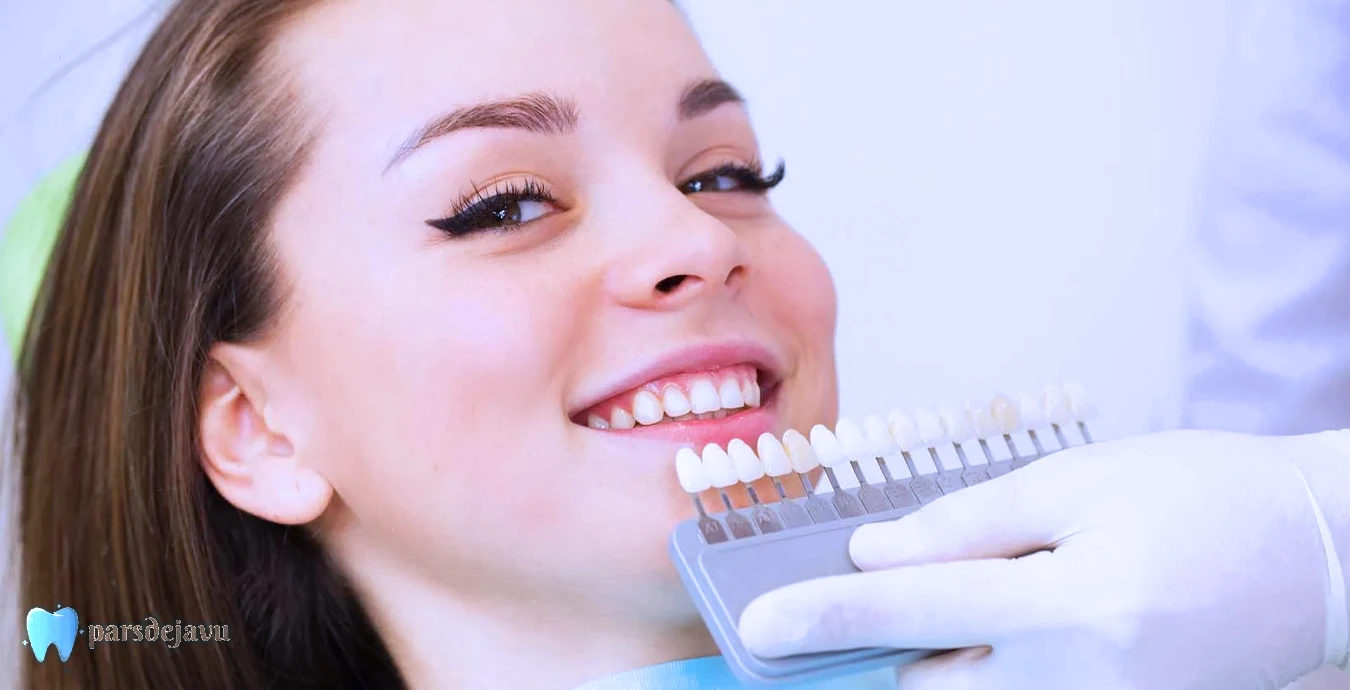A smile is the first thing people notice in human interactions and leaves a deep impression on others’ minds. Having white, well-aligned, flawless teeth not only enhances facial beauty but also boosts your self-confidence. If you’re looking for a professional, long-lasting, natural way to improve your smile design, ceramic veneers are exactly what you need.
Ceramic veneers are one of the most advanced cosmetic dentistry techniques. They can address issues such as tooth discoloration, chipping, gaps between teeth, and minor misalignments painlessly and quickly. Using a thin, strong layer of ceramic, this technique not only beautifies your smile but also gives your teeth a natural, lasting appearance.
In this article, you’ll become familiar with all the details about ceramic veneers: their benefits, procedure steps, aftercare, costs, and differences from similar methods. Follow along to discover how a smart choice can restore beauty and confidence to your smile.
Book Appointment
"*" indicates required fields
What Are Ceramic Veneers?
Ceramic veneers (also known as porcelain veneers) are thin, high-strength ceramic layers bonded to the front surface of teeth. These layers are fabricated in specialized labs with high precision, matching the color, shape, and size of natural teeth.

Why Choose Ceramic Veneers?
If you desire white, even, flawless teeth, ceramic veneers are one of the most professional smile design solutions. By covering the front surface of your teeth, this method completely transforms their appearance and gives you a natural, luminous, attractive smile.
Advantages of Ceramic Veneers
Ceramic laminates, as one of the most popular dental aesthetic methods, offer numerous advantages that make them a smart choice for smile design correction:
- Natural, luminous appearance: The semi-translucent texture of ceramic makes the result look just like natural teeth.
- High stain resistance: Unlike natural teeth or even composite, ceramic veneers are highly resistant to tea, coffee, and tobacco stains.
- Long-lasting durability: With proper care, ceramic veneers can last between 10–15 years or more.
- Complete aesthetic correction: Issues like gaps, chips, cracks, discoloration, and unevenness can be easily fixed.
- Minimal tooth reduction in some cases: Depending on the dental condition, less tooth shaving may be required than with composite veneers.
Disadvantages of Ceramic Veneers
Although ceramic veneers have many benefits, it’s important to consider potential drawbacks:
- Irreversible enamel removal: Tooth enamel must be trimmed to place veneers, which can’t be restored.
- Risk of chipping or fracture under heavy pressure: Although durable, ceramics can break if subjected to impact or sudden force.
- Relatively high cost: Due to high-quality materials, digital design, laboratory fabrication, and processing, final cost is higher than some other methods.
- Strict oral hygiene required: Lack of proper care can lead to gum inflammation or decay at the veneer-tooth junction.
✅ Tip: By choosing an experienced specialist, using high-quality veneers, and following hygiene recommendations closely, many disadvantages can be minimized and you can enjoy a beautiful, long-lasting smile.
Who Is a Suitable Candidate for Ceramic Veneers?
Ceramic veneers are suitable for individuals who:
- Have teeth with improper color, shape, or position.
- Have chipped or broken teeth.
- Want a long-lasting smile makeover.
- Have healthy front teeth without extensive decay.
Who Should Avoid Ceramic Veneers?
This method is not suitable for everyone. It’s not recommended in these cases:
- People with severe teeth grinding (bruxism): Continuous pressure can crack or break the veneers.
- Individuals neglecting oral hygiene: Veneers require diligent care.
- Those with deep decay or serious gum issues: Oral diseases must be treated first.
- People with unrealistic aesthetic expectations: expecting teeth to look excessively white or flawless.
- Individuals with very thin enamel: Safe trimming may not be possible.
During consultation, the dentist will assess oral health, tooth structure, gums, and habits to determine suitability.
Amount of Tooth Reduction
A common concern is how much enamel is removed. For ceramic veneers, trimming is usually minimal—only on the front surface to create space for the ceramic layer:
- Typically 0.5–0.8 mm of enamel is removed.
- Does not damage the main tooth structure.
- In some cases, ultra-thin, no-prep porcelain veneers are an option.
- Experts use digital scans and 3D design to minimize tooth reduction while maximizing results.

Steps of the Ceramic Veneer Procedure
The process demands precision, planning, and expert execution. At our clinic, we follow a professional, staged approach:
1. Consultation & Initial Examination
The cosmetic dentist evaluates teeth, gums, and jaw structure. If veneers are suitable, treatment is planned and digital images are taken for smile design.
2. Digital Smile Design (DSD)
Using advanced software, the ideal form, color, size, and positioning of teeth are designed to match facial aesthetics. This lets patients preview final results.
3. Tooth Preparation (Enamel Trimming)
A thin layer of enamel (about 0.3–0.7 mm) is trimmed from the front tooth surfaces under local anesthesia, without discomfort.
4. Precise Impression
Accurate molds are made of prepared teeth. Temporary veneers are placed during lab fabrication.
5. Laboratory Fabrication
Impressions are sent to a specialized lab. Ceramic veneers are built to digital design specifications—a process taking a few days to a week.
6. Veneer Bonding
After try-in, veneers are bonded using resin cement and cured under a special light.
7. Final Adjustment & Polishing
The dentist fine-tunes fit, bite, speech, and aesthetics, then polishes for a natural shine.
Types of Ceramic Veneers
Depending on the material, technology, and application, ceramic veneers are categorized as:
- Porcelain Veneers: :
The most common, durable, and naturally translucent.
- Lithium Disilicate (E-max) Veneers: :
Made from high-strength lithium ceramic, excellent for front teeth.
- Zirconia Veneers:
Suitable for severely stained teeth or patients who grind their teeth; extremely durable and somewhat thicker.
Choice depends on tooth condition, patient expectations, and dentist recommendation.
Aftercare for Ceramic Veneers
To preserve beauty, health, and longevity of veneers, follow these essential care tips:
1. Maintain excellent oral hygiene
Keeping teeth and laminates clean is one of the most important factors in preventing decay, gum inflammation, and discoloration of the laminate edges.
✅ Brush twice daily with a soft toothbrush
✅ Use dental floss daily
✅ Use plaque-reducing, antibacterial mouthwash (if recommended)
2. Avoid unusual pressure
Teeth are not tools for opening packages or breaking hard objects. Improper use can damage laminates.
❌ Avoid opening bottles or biting nails
❌ Don’t chew ice, spoons, or hard objects
❌ Avoid clenching/bruxism
3. Regular dental check-ups
Biannual visits allow checking veneers, gums, and underlying tooth health to prevent issues.
4. Limit exposure to staining substances
Although ceramic laminates are resistant to staining, excessive consumption of staining foods and beverages over time may lead to darkening of the edges where the laminate meets the tooth.
📌 Although ceramic laminates are resistant to staining, excessive consumption of staining foods and beverages over time may lead to darkening of the edges where the laminate meets the tooth.
📌 Rinse with water or use a straw after consuming staining foods.
5. Use a night guard if you grind your teeth
Bruxism protection prevents excessive pressure on veneers.
6. Avoid OTC whitening and abrasive toothpaste
These can damage or alter veneer color.
Cost of Ceramic Veneers
Final cost varies depending on the number of teeth, material type, and treatment complexity. Contact our clinic for a specialized consultation and accurate estimate.
Why Choose Pars Dejavu Clinic?
- Over 10 years of specialized smile design experience
- Over 10 years of specialized smile design experience
- Over 10 years of specialized smile design experience
- Digital smile design using advanced software
- High patient satisfaction with real before/after cases
